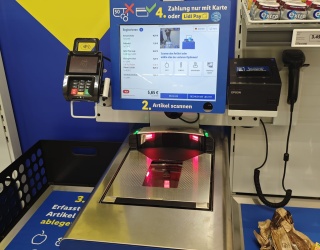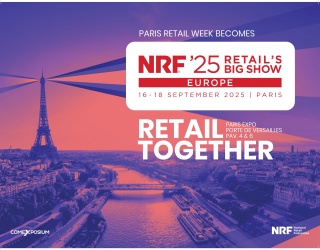Facebook, WhatsApp etc. extensively influence the way we communicate. Thanks to the activation of messaging services for companies, they will most likely also change online retail in the long run. While one-to-many communication was the common way in the past, one-to-one communication increasingly prevails in this case. E-Commerce is well on its way to becoming conversational commerce.
iXtenso asked Caroline Langer, International Marketing Manager at iAdvize, to what degree messenger services are changing online communication between customers and retailers and what role bots could play in all this.
Ms. Langer, does the subject of “conversational commerce“ actually only include messaging services?
Caroline Langer: There has been a lot of buzz around conversational commerce thanks to Facebook Messenger. Having said that, the general principle here is that companies communicate with their customers and do so at a one-to-one level. This can also be accomplished through integrated functions on a website like “chat“, ”call“ or ”video“ or on social networking sites like Twitter and Facebook. There are a multitude of channels that cover the subject of conversational commerce and contribute to this type of dialog in e-commerce.
What challenges do retailers face at this point?
Langer: It is a major challenge for companies and especially for small retailers to consolidate all of these channels. That’s why iAdvize is providing a platform that centralizes them and makes it usable for customer service representatives, community managers and all those who handle incoming contacts. The channels are combined in an agent console so that the incoming contacts are labeled with the respective channel but are displayed in one spot.
That means, the customer service representative is able to process inquiries considerably faster and more efficiently and doesn’t need to switch between the individual channels. It is especially important when it comes to messaging services for inquiries to be passed along to the right contact person. That’s why our platform provides the opportunity to assign the contacts to the right experts.

A recent press release stated that Facebook has activated its Messenger for companies. Is the Facebook Messenger directly integrated into the website of the provider or does everything continue to be run on Facebook?
Langer: We integrated the Messenger function on the website of our client voyages SNCF. That said, the customer is transferred to Facebook and therefore leaves the provider’s website. Nevertheless, the customer still gets directly in touch with the retailer in Messenger. In an actual application, it looks like this: the customer is first on the website, books a trip and is subsequently able to decide whether he or she wants to receive the confirmation via e-mail or Messenger. If he chooses Messenger, he receives an order confirmation and anything pertaining to the trip directly on his smartphone. In addition, the customer is able to get directly in touch with the service provider at any time. Instead of calling customer service or writing an e-mail, customers can reply directly to the order confirmation. This is very convenient for the user since all information is available in one location. It’s exciting for the company because Messenger establishes direct contact with the customer. This increases customer loyalty because contact isn’t interrupted quite as quickly as might be the case with chat on the website.

So the chat function on the website can be frustrating for customers?
Langer: A chat can be a frustrating experience because customers expect a prompt response to their questions. The way we solved this with a telecommunications service provider is to only indicate the chat function once a customer service representative is available. If no representative is available and the customer is still in a critical state, other contact options like messaging services can be offered for example. Various strategies for this are stored in the system.
Are customer service representatives able to serve several customers at the same time?
Langer: That is a possible option and an important one at that. From a technical perspective, up to six conversations can be conducted using our platform, regardless of the channel, that being Messenger, Chat or Twitter. Having said that, we recommend three chats to maintain quality and increase efficiency. Even though the conversation takes a little longer – compared to a phone call – you can run several conversations at the same time. Depending on the provider, this takes between five and eight minutes since the product also needs to be explained.

What about data protection? Facebook, in particular, is always facing criticism in this area.
Langer: The Data Protection Act applies the moment a user can be clearly identified. Above all, it is important that the customer is the one who decides what data is being used and who has access to it. That’s the foundation of the German Data Protection Act. You also need the explicit consent of the customer, stating that data may be shared with the provider. The customer subsequently acknowledges the data protection terms and conditions through the opt-in process, that’s mandatory from a data protection perspective. However, the customer needs to be aware that the moment he receives or passes on data in Messenger, it is stored in Messenger, meaning in Facebook. Meanwhile, retailers need to contractually arrange data protection issues directly with Facebook.
Do you also provide bots as a service provider or is that specifically Facebook’s responsibility?
Langer: Facebook provides a bots store. It was introduced at this year’s F8 conference in San Francisco. Everyone who registers at this store can build his/her own bot. So far, there has been a lot of testing, trial, and error but there are only few who use the bot in e-commerce. One example of this is the US fashion retailer Spring. Something we see as an opportunity in the future is a mix between bots and customer service in the background since a bot is only able to process 30 percent of inquiries. A customer service representative obviously needs to be available in the background, the moment the questions become more detailed, contain a spelling error or the question has never been asked before.
Is artificial intelligence an issue in this context?
Langer: Absolutely. However, tests that have already been conducted reveal that technology is not good enough yet for the bot to answer questions independently. Microsoft‘s chatbot “Tay“ that was launched in the spring of 2016, can be seen as a negative example. Tay was intended to learn from its users on Twitter. Unfortunately, users taught the bot sexist and racist concepts so that Microsoft was forced to take the bot off the Internet again within just 24 hours. This shows that the issue of bots and artificial intelligence is still in its infancy but carries enormous potential.
Messaging services like kik or WeChat are unknown in Germany. Which messaging services do online retailers prefer and are there differences between countries?
Langer: Yes, there are major differences in some instances. In Europe, WhatsApp and Facebook are the top choices. Facebook Messenger is more popular in France and the southern countries, while WhatsApp is the preferred choice in Germany and the northern countries. There is a simple reason for that: up until two years ago, WhatsApp was not a part of Facebook. That’s why many only used WhatsApp Messenger and that still hasn’t changed much after the acquisition by Facebook.
Things are very different in China. WeChat is very established here. The country is a real trailblazer if you want to see what the future will look like because you can already make payments with this messaging app. The payment function is integrated into the app. WeChat interacts with all other apps and works like a web browser. The Chinese make restaurant reservations, book trips or pay for their purchases using WeChat. In Europe, this type of technology is still in its infancy.










